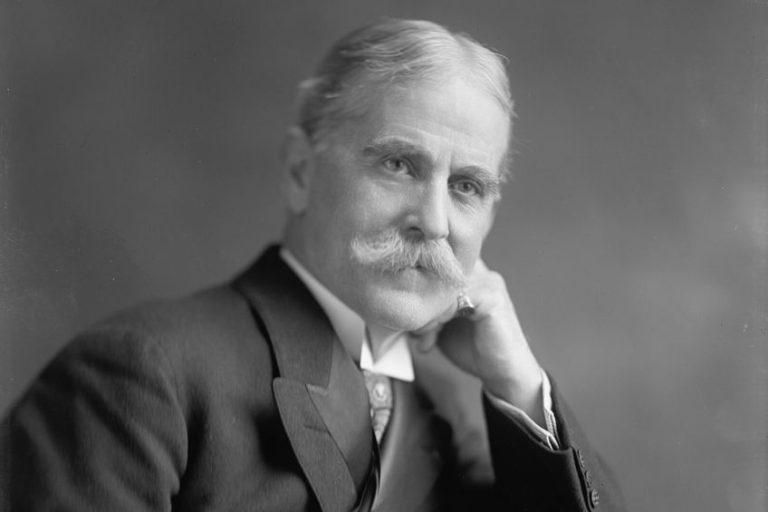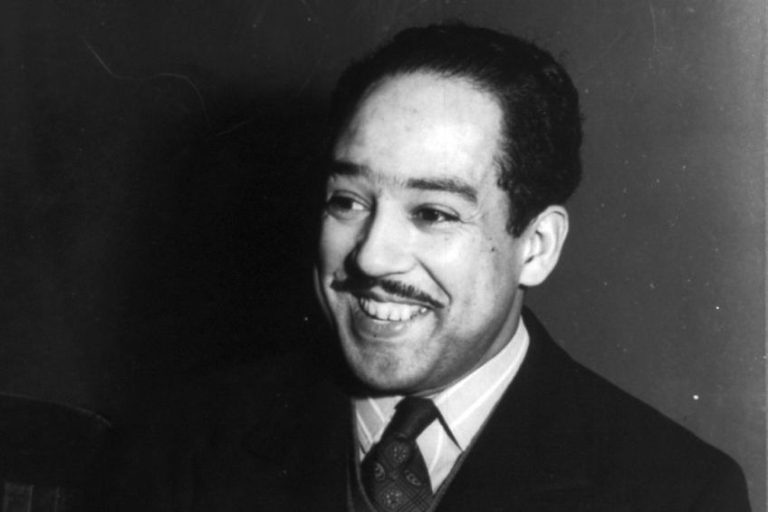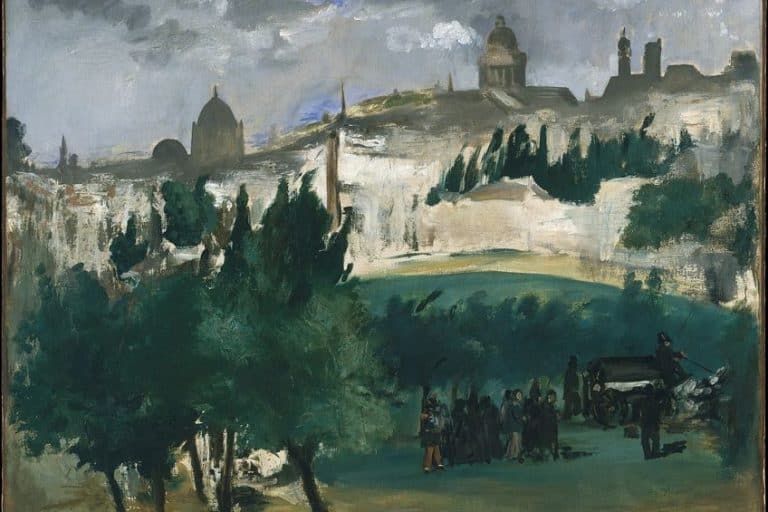“No Man Is An Island” Poem by John Donne – An Analysis
Humans love a good quote, and the subject of our discussion today is one that includes two immensely famous quotes. The first of which is in the title of the article itself, because we are looking at the No Man Is An Island poem by John Donne, and it includes both the famous phrase that is the title, as well as the phrase, “for whom the bell tolls, it tolls for thee”. These two quotes alone, which are so closely connected to one another in the text itself, should be enough to pique some interest as to how exactly they are connected to one another. So, if you want to know and understand just how and why they are attached to one another, and perhaps learn a few other things along the way, then give this article and analysis a shot!
No Man Is An Island Poem by John Donne Analysis
| Date Published | 1624 |
| Literary Type | Poetic prose |
| Rhyme Scheme | None |
| Meter | Variable |
| Topic | Interconnectedness of humanity |
There are the occasional things in this world that we perceive to be one way, but they are not actually that way at all. This is the case when it comes to the No Man Is An Island poem by John Donne. Why is this not the way that it seems with this particular poem? Well, probably because it is not a poem at all. Instead, this “poem” is an extract from Devotions Upon Emergent Occasions, which is a prose work rather than a poetic work. However, the particular section that makes use of the “no man is an island” line can be read as if it were poetry.
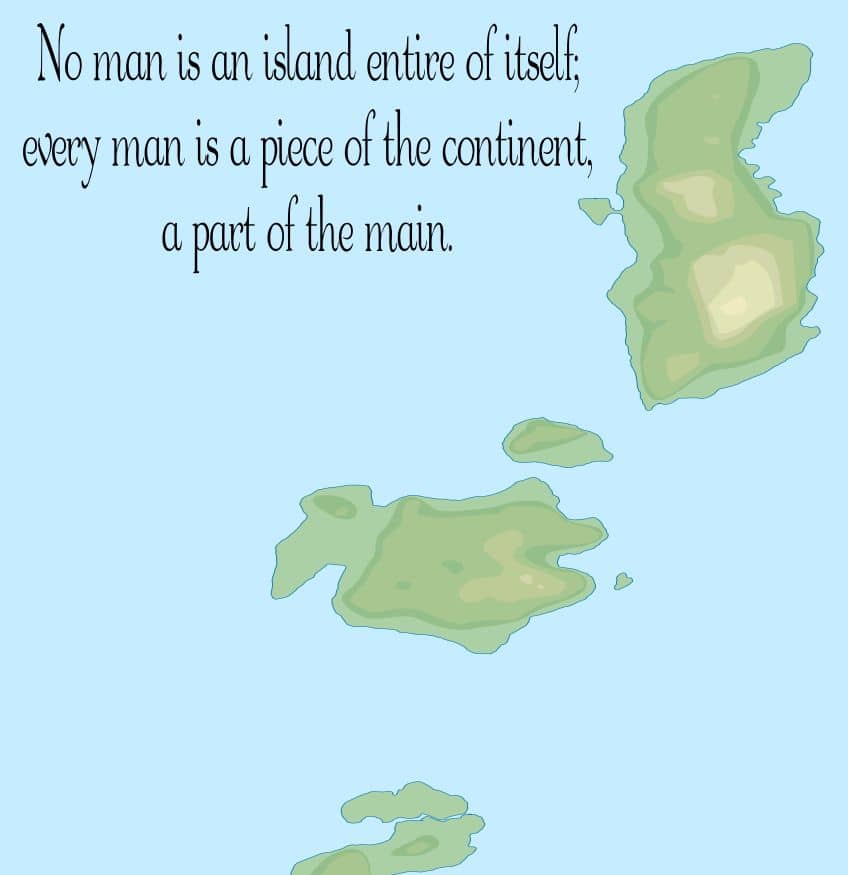
While the broader context of this “poem” will be discussed once we get to our actual analysis of the No Man Is An Island Poem by John Donne, it should be stated in brief here. The extract is from the 17th Devotion, or Meditation XVII, of this longer text. It can be viewed on its own, but as with any extract, it is often best to view it within that broader context. We’ll have a more in-depth examination soon enough though. For now, we will first have a look at a few other small points that surround this particular “poem”, but first, a summary of things to come.
No Man Is An Island Poem by John Donne Summary Points
We all like to have a summary every now and then. It makes it easier to parse through the endless information that swirls around every single day. This is probably why we’re including one right here! While we will discuss things in more depth after the summary, this short section may be helpful to whoever may have need of it:
- No Man Is An Island is from Devotions upon Emergent Occasions. As part of this longer text by John Donne, it should be remembered and noted that the No Man Is An Island poem by John Donne is not complete and devoid of context. While it can be read alone, it is also integral to see that there’s a larger context at play.
- No Man Is An Island is about the interconnectedness of humanity. The meaning of the No Man Is An Island poem by John Donne may technically need to be understood in the context of the larger prose text that surrounds it, the text is ultimately about the way in which we as people are all connected to one another. We need to learn to understand this reality of the world because many tend to embrace individuality over an appreciation for our collective existence.
- No Man Is An Island is from the metaphysical poetry tradition. John Donne was the writer of this particular extract, and while it is not actually poetry and is instead an example of more poetic prose, it can still be seen as part of the tradition that incorporated intellectual ideas, heavier use of language, and a conversational style of writing.
A summary can go a long way to help someone out. Whenever I used to teach, I would provide my students with all sorts of summaries to help them out when it came time to study. Did it help them? It certainly seemed to! The additional resource is something that can be used to great effect, and so if you too would like to understand something but in a quick and easy format.
Hopefully, the above has managed to do exactly that!
Biography of John Donne
| Poetic Movement | Metaphysical poetry |
| Years | 1571/2 – 1631 |
| Place of Birth | London, United Kingdom |
| Known For |
|
John Donne is one of the most influential 17th-century English writers and an important figure in the metaphysical poets. Over the course of his life, he was a number of different things, such as a soldier and a secretary, but he has maintained an influence because of his literature. His work, interestingly, often fluctuated between deep poems about love and sensuality as well as various academic and poetic works about religious concepts and ideas. His poetry can be found to have explored various formats and mediums, and he produced scholarly work in fields unrelated to poetry. During his career, he was also employed at the St. Paul’s Cathedral as the Dean but spent much of his life engaging in expensive pursuits that drained much of his inheritance, such as travel and womanizing.

His work as one of the metaphysical poets would lead to him being a major figure in the development of complex poetry that made use of paradoxical concepts, ironic understandings, everyday language, and often unusual language. While the term “metaphysical poet” would actually only be a term that was applied in retrospect, he certainly did come to be seen as one of the greatest poets to have lived within that particular period of English literature.
An In-Depth Analysis of the No Man Is An Island Poem by John Donne
It has been mentioned before, but it stands to be reiterated because it is a rather important thing to keep in mind when analyzing something like this, but the No Man Is An Island poem by John Donne is a text that does not technically stand alone. It is part of a larger text named Devotions Upon Emergent Occasions, and so there are certain contextual aspects of the broader text that should be noted. For instance, the entire text was written while Donne was recovering from an illness, and so there are references to life and death, rebirth, and disease as something divine that comes from God because of sinfulness.
These kinds of aspects of the larger text will not be given any deliberate focus, but they do inform the text that we will read below.
Furthermore, the text is not actually a poetic text at all, but rather a prose one, and so the sectioning of the text that I do below is only for analysis reasons rather than because they are actual stanzas. However, even though it is not technically a poem, it has been treated as such by many, and I will continue that trend here because while the text is not actually poetry, it is poetic prose, and so thinking of it in poetic terms can be an interesting means of exploring the text. However, we are only going to get into the weeds of things if we actually jump in and get to the analysis!
Section One
No man is an island,
Entire of itself;
Every man is a piece of the continent,
A part of the main.
The first line of the No Man Is An Island poem by John Donne is one of the most famous quotes that Donne ever produced, and it has a rather simple meaning. The metaphor of landmasses is used to explain human connection. No humans are entirely alone and independent, like islands dotted about the ocean. Instead, we are actually all part of one great continent. This establishes the theme of human connection that stands as one of the themes of the text.

The final line reiterates this. No one is alone, because we can see all others as part of one unity, and so we’re all components “of the main”. As the work of John Donne was focused on religious and spiritual ideas, we can also see this as having a spiritual dimension. We may not be conjoined together in a physical sense, like some kind of grotesque Akira monstrosity.
We are connected to each other on a deeper and less physical level.
Section Two
If a clod be washed away by the sea,
Europe is the less,
As well as if a promontory were:
As well as if a manor of thy friend’s
Or of thine own were.
The idea of humanity being connected persists into this second section. It tells us that if some of that continent were to float away if it were to break off and disappear, we would be the worse for it. It makes use of three different images of something breaking away and washing away to say that they are all equal: a clod, or small piece, a promontory, a large section of rock, or even a friend’s home, which is something man-made but still part of the whole.
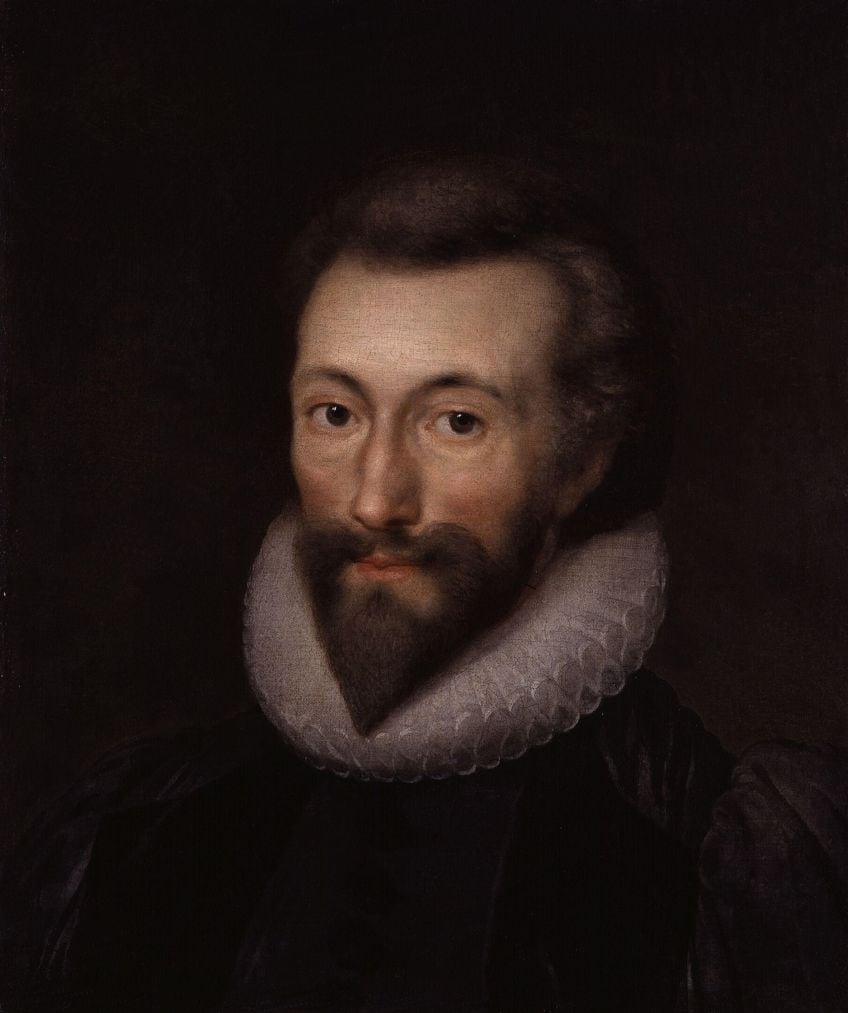
The second and final lines of this section explore the idea of the loss that would be felt. The second line mentioned how “Europe” would be “less” if anything were to fall away, and Donne was writing from a Eurocentric mindset, but in the modern day, we could use any continent or landmass. Whereas the final line states that “or of thine own were”, which means that we should see all of these different parts that may fall away as being part of a singular whole that includes us.
The whole is us and we are the whole.
Section Three
Any man’s death diminishes me,
Because I am involved in mankind.
And therefore never send to know for whom the bell tolls;
It tolls for thee.
The final section tells us that the death of any should weaken and diminish the individual because we are all part of the same whole. And the last two lines are some of the most famous in 17th-century English literature. It makes use of the imagery of church bells that have tolled to signify the death of someone, but if we are all connected to one another then we should not wonder “for whom the bell tolls”, because “it tolls for thee”, meaning the individual. Every death harms the collective, and every individual is the collective.

The Themes of the No Man Is An Island Poem by John Donne
The primary themes that can be found in the No Man Is An Island poem by John Donne have to do with humanity and our connection with one another. The poem wants to explore this idea of humanity being one and the same. We are not actually entirely distinct entities that exist separate from one another, but we are instead all part of the same great organism. We can see this in very spiritual terms.
The sense of community that the poem expresses to us is a major aspect, and the phrase “no man is an island” has gone on to be shorthand for this very idea.
We need each other. Humans are not meant to be entirely alone but are rather meant to be living among one another, collaborating and cooperating, to advance the interests of society as a whole. There is a supreme level of hopefulness in a theme such as this, a desire for us all to understand one another on a deeper level.
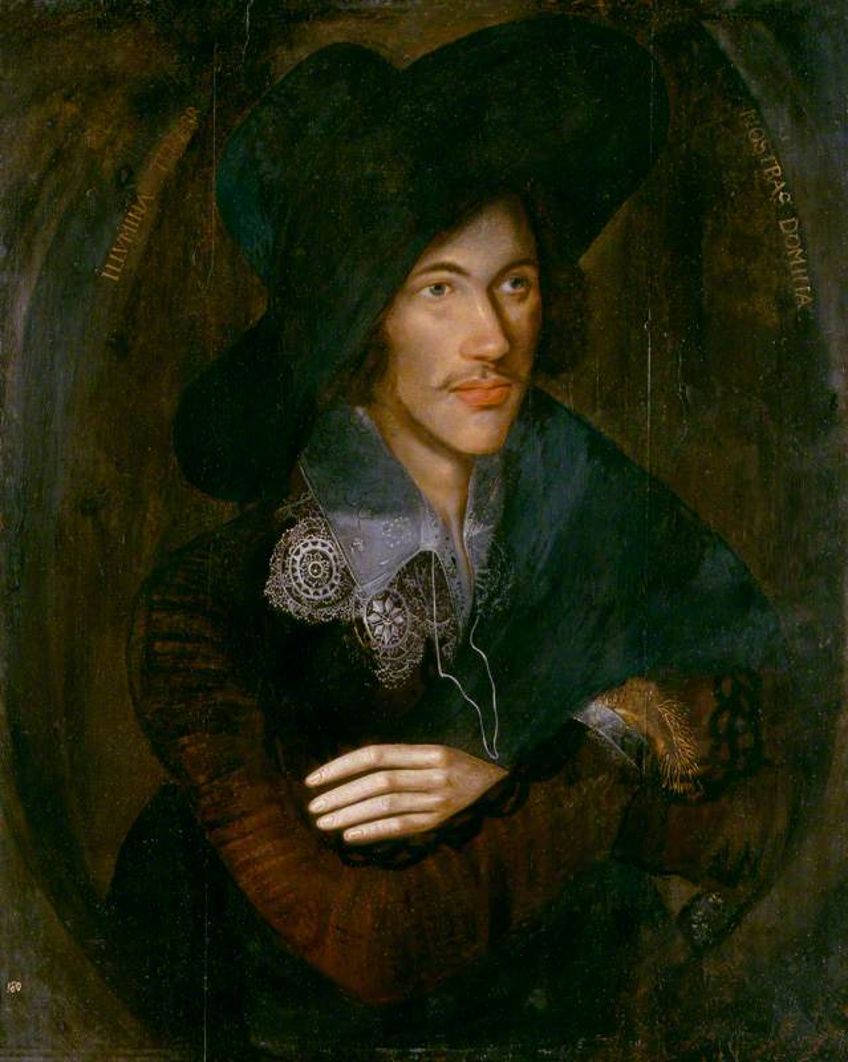
This sense of connection also continues into the final message of the No Man Is An Island poem by John Donne. When it comes to the death of the individual, the text expresses that we all die when others die. We are all part of each other, and so the death of any amounts to a death of the whole, and we are all part of the whole. These kinds of ideas have remained powerful comments on the connectivity of the human species.
With this final recapping of the themes of the No Man Is An Island poem by John Donne, we have come to the end of it all! This extract from a longer prose text may not technically be a poem at all, but it makes use of the kind of poetic language that lends itself to being interpreted as such far more than one might see an ordinary extract of prose. We have provided an analysis of the text, as well as a few additional pieces of information, such as a biography of the poet and some of the themes under examination. Hopefully, this article has been a good resource for understanding the No Man Is An Island poem by John Donne, but perhaps you also have your own interpretations of the text, and those should also be explored!
Frequently Asked Questions
What Is the No Man Is An Island Poem by John Donne?
The No Man Is An Island poem by John Donne is not actually a poem at all. Instead, it is an extract from a larger prose text titled Devotions Upon Emergent Occasions. It is also, more specifically, from the section titled Meditation XVII. However, it has often been taken as its own text because it can stand somewhat on its own. There is technically a broader context around the text as a whole, but as it is written in poetic prose, it can be read on its own.
Who Was John Donne?
John Donne was a poet and scholar from the 17th century. He was a prominent member of what would retrospectively be titled the metaphysical poets. His work was often noted for its sensuality and its religious conviction. He wrote many different texts over his career, and his work is often noted for its use of ironic and intellectual musings, everyday language usage, and abruptness in their openings.
Who Were the Metaphysical Poets?
The metaphysical poets were a group of 17th-century English poets who all had similar general styles and ideas that they were expressing. They often wrote in a more conversational style, used intellectual ideas, and inventive expressions of language. The poets who have been put under this label did not create the term themselves. Instead, it was Samuel Johnson who would coin the term long after the metaphysical poet era had come to an end. For this reason, it was a term created in retrospect. John Donne would remain one of the best-known 17th-century English writers thanks to his work.
What Other Texts Did John Donne Write?
John Donne wrote in many different mediums, and he wrote extensively. When it came to his poetry, he wrote texts such as Death Be Not Proud (1633) and his Holy Sonnets (1633), but other than these, he also wrote prose texts like Devotions Upon Emergent Occasions (1624). In addition to these kinds of texts, he also wrote various epigrams, sermons, and translations. His work was extensive and has become immensely influential. He would also go on to be seen as one of the preeminent members of the metaphysical poets even though this was never a label that he used.
What Are the Themes of the No Man Is An Island Poem by John Donne?
The principal themes of the No Man Is An Island poem by John Donne have to do with the interconnectedness of humanity. We are all together upon the earth and we should try to understand our place in terms such as these. It advocates for an understanding of humanity as part of a greater community than the individual alone and how we will all eventually reach our end. The text is a meditation on life itself and the very nature of humanity in general.
Justin van Huyssteen is a freelance writer, novelist, and academic originally from Cape Town, South Africa. At present, he has a bachelor’s degree in English and literary theory and an honor’s degree in literary theory. He is currently working towards his master’s degree in literary theory with a focus on animal studies, critical theory, and semiotics within literature. As a novelist and freelancer, he often writes under the pen name L.C. Lupus.
Justin’s preferred literary movements include modern and postmodern literature with literary fiction and genre fiction like sci-fi, post-apocalyptic, and horror being of particular interest. His academia extends to his interest in prose and narratology. He enjoys analyzing a variety of mediums through a literary lens, such as graphic novels, film, and video games.
Justin is working for artincontext.org as an author and content writer since 2022. He is responsible for all blog posts about architecture, literature and poetry.
Learn more about Justin van Huyssteen and the Art in Context Team.
Cite this Article
Justin, van Huyssteen, ““No Man Is An Island” Poem by John Donne – An Analysis.” Art in Context. January 22, 2024. URL: https://artincontext.org/no-man-is-an-island-poem-by-john-donne/
van Huyssteen, J. (2024, 22 January). “No Man Is An Island” Poem by John Donne – An Analysis. Art in Context. https://artincontext.org/no-man-is-an-island-poem-by-john-donne/
van Huyssteen, Justin. ““No Man Is An Island” Poem by John Donne – An Analysis.” Art in Context, January 22, 2024. https://artincontext.org/no-man-is-an-island-poem-by-john-donne/.




